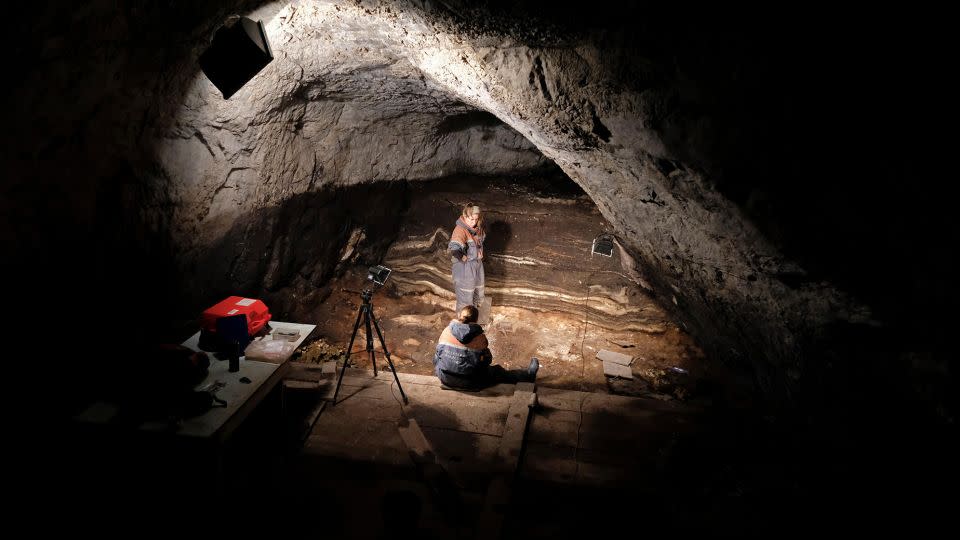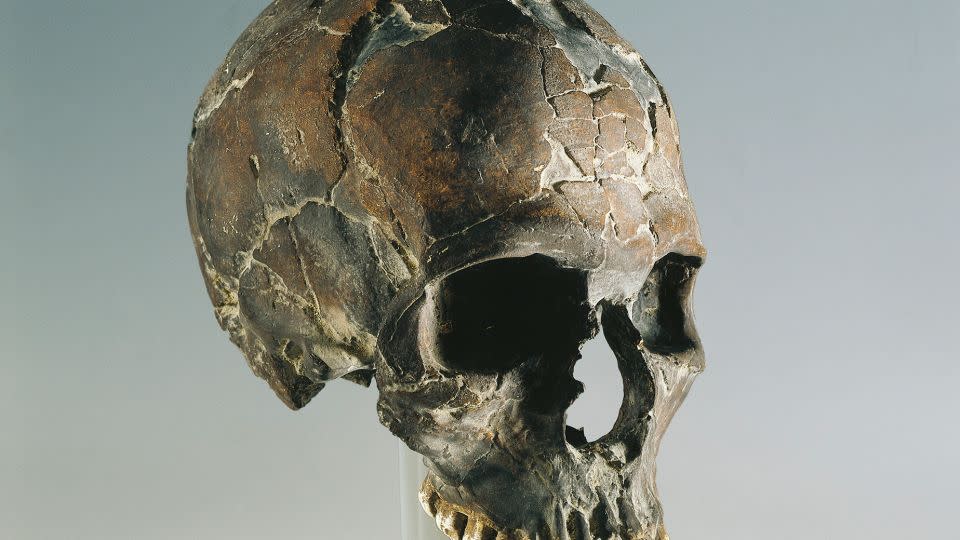Sign up for CNN’s Wonder Theory science newsletter. Explore the universe with news about fascinating discoveries, scientific advances and more.
The discovery in 2010 that early humans and Neanderthals had once interbred was a scientific bombshell. It revealed a genetic legacy that has since been found to play a role in modern humans’ lives, affecting circadian rhythms, immune system function and the way some people sense pain.
But scientists have discovered that piecing together the reverse gene flow is surprisingly difficult: how mixing between the two groups may have shaped Neanderthals, which went extinct about 40,000 years ago. With the help of new techniques, a new study paints a clearer picture.
The analysis, published July 12 in the journal Science, shows that the two groups exchanged DNA at multiple points over the past 250,000 years, shedding light on how Neanderthals disappeared and potentially rewriting the story of when and how our Homo sapiens ancestors left Africa.
“Most of the genetic data so far suggest that modern humans evolved in Africa 250,000 years ago, remained there for the next 200,000 years, and then decided to disperse from Africa and settle in the rest of the world 50,000 years ago,” said Joshua Akey, professor at the Lewis-Sigler Institute at Princeton University and senior author of the study.
“But genetics is essentially blind to anything that doesn’t leave ancestors behind in present-day populations. I think what’s (kind of) great about this (paper) is that it provides genetic insights into these expansions out of Africa that we couldn’t see before,” Akey said.
The findings suggest that very early human history was complex, and that modern humans interacted with Neanderthals and other archaic human species, including the mysterious Denisovans, much more frequently than previously known since our species emerged about 250,000 to 300,000 years ago.
Multiple mating episodes
By comparing DNA sequences in databases, scientists can reconstruct relationships between different populations or species. Because genetic changes occur at a constant rate over a generation, geneticists can calculate the time period during which two groups exchanged DNA, like the ticking of a molecular clock.
The study found that humans left Africa and encountered and interbred with Neanderthals in three waves: The first wave around 200,000 to 250,000 years ago, shortly after the first Homo sapiens fossils appeared in Africa; the second around 100,000 years ago; and the last around 50,000 to 60,000 years ago.
The most recent episode is widely accepted and was first identified in 2010 when the first Neanderthal genome was sequenced by Nobel Prize-winning geneticist Svante Pääbo. But the new research showed that the first two waves were significantly different from the third wave, an extensive migration that eventually led to modern humans inhabiting every corner of the globe.
Scientists have discovered that the proportion of Homo sapiens DNA in the Neanderthal genome may have been as much as 10 percent higher 200,000 years ago and has decreased over time, averaging between 2.5 and 3.7 percent.
A similar study published last year identified genetic traces of an encounter between the two groups about 250,000 years ago, but the contribution of Homo sapiens DNA to Neanderthals about 100,000 years ago is a new finding, said Laurits Skov, a geneticist and postdoctoral researcher at the University of California, Berkeley, who was not involved in the study.
“What is certain, however, is that human and Neanderthal history are much more intertwined than we previously thought,” he said via email.
Genetic detective work
During two previous waves of interbreeding, Neanderthal populations absorbed human genes and their offspring remained within Neanderthal groups, according to the new study.
These early interbreeding events, which resulted from small groups of pioneering Homo sapiens migrating out of Africa but failing to establish a strong foothold, left little record in the gene pool of today’s human populations but had a major impact on the Neanderthal genome, Akey said.
“I think the simplest explanation is that this reflects changes in population size over time,” he added.
“Initially, (early) modern humans were gradually moving out of Africa, and Neanderthal populations were large enough to absorb these early dispersals of humans and their genes,” Akey explained.
But after Homo sapiens left Africa and migrated around the world about 60,000 years ago, the offspring of Homo sapiens-Neanderthal encounters grew up in modern human communities, and their genetic signatures remained in the human gene pool, influencing our lives today, he added.
In the study, the team used machine learning techniques to decode and sequence the genomes from the remains of three Neanderthals, dating from 50,000 to 80,000 years ago and found in three different locations: Vindija in Croatia and Denisova and Chagyrskaya caves in the Altai Mountains. The researchers then compared this data with 2,000 genomes of modern-day humans.
“We developed a framework to determine whether there was gene flow between humans and Neanderthals, to estimate how much modern human sequence is present in Neanderthal genomes, and to identify specific locations in the Neanderthal genome that carry modern human sequences,” Akey said.

The mystery of the disappearance of Neanderthals
Chris Stringer, a research leader in human evolution at the Natural History Museum in London who was not involved in the study, said there are a handful of fossils that could reflect Homo sapiens’ early and not-so-successful journeys from Africa to the Middle East and Europe.
These include a Homo sapiens fossil from Apidima Cave in southern Greece, dated to 210,000 years ago, and remains from the Skhūl and Qafzeh sites in Israel. The fossils found in Israel had “primitive features” such as larger eyebrows, flatter skulls and variable jaws.
“I had interpreted these features as coming from more primitive non-Neanderthal ancestors, but alternatively they could be signs of gene flow from Neanderthals, and perhaps such features should now be re-examined in light of this new work,” Stringer said.


The population dynamics identified in this study may be the primary cause of Neanderthal extinction 40,000 years ago, Akey said. The researchers’ analysis suggests that the Neanderthal population size at that time was 20% smaller than previously thought.
“The human population was larger and, like waves crashing onto the shore, eventually washed away the Neanderthals,” Akey said, adding that the Neanderthal gene pool likely mixed with the human population in the last wave of mating.
“Extinction is a complex topic, so I think I would hesitate to say that this is the only explanation… but I think the absorption of Neanderthals into human populations does explain to a significant extent why Neanderthals disappeared,” he added.
Stringer said he agreed that the final phase of interbreeding may have contributed to Neanderthal extinction, as the Neanderthal population became smaller and less diverse as Neanderthal DNA entered the broader human gene pool.
“I think this is an important point,” Stringer said. “Accounting for the increase in Neanderthal genetic diversity from interbreeding with sapiens also significantly reduces effective population sizes, adding further evidence that late Neanderthals may already have been an endangered species even without competition from an expanding Homo sapiens population.”
For more CNN news and bulletins, create an account at CNN.com